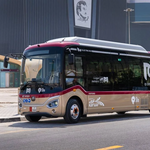Qatar enjoys a highly advanced internet ecosystem with multiple access technologies available. Fiber-optic broadband (FTTH) is the dominant fixed access method, providing high-speed connectivity to homes and businesses nationwide. In fact, fiber is “by far the most prevalent fixed technology in Qatar,” having largely replaced legacy copper/DSL lines. The vast majority of fixed subscriptions now use fiber links capable of 100 Mbps or higher speeds. Traditional DSL is virtually obsolete as the country has rapidly transitioned to fiber-optic networks offering gigabit-class speeds.
Qatar’s two telecom operators have deployed extensive 4G LTE networks and were early leaders in 5G. Ooredoo Qatar was “the first operator in the world to launch a live 5G network in May 2018”. Both Ooredoo and Vodafone now offer nationwide 5G coverage. This 5G rollout – with peak speeds in the gigabit range – complements existing 3G/4G services and enables high-bandwidth wireless internet access on smartphones, home routers, and IoT devices. Mobile broadband (via 4G/5G) is widely used by virtually the entire population (with active mobile broadband penetration around 150% of population), ensuring internet access even on the move.
Home Internet in Qatar
- Fiber Broadband
Qatar has invested heavily in fiber infrastructure, and nearly all homes in Doha and major towns are covered by fiber-to-the-home (FTTH) networks.
Main Providers:
Ooredoo
Offers up to 10 Gbps (rare, premium tier).
Most common residential plans range from 100 Mbps to 1 Gbps.
Bundles often include Wi‑Fi mesh routers, BeIN TV, and landline.
Pros: Reliable service, good coverage, strong infrastructure.
Cons: Slightly pricier, and support can be inconsistent.
Vodafone Qatar
Offers symmetrical speeds (same upload/download), which is great for video calls, streaming, and gaming.
Common plans include 300 Mbps, 500 Mbps, and 1 Gbps tiers.
Giga Home plan includes a dedicated app, Wi‑Fi mesh setup, and access to smart home services.
Pros: Lower latency for gaming, affordable rates.
Cons: Some users complain about being behind CGNAT (Carrier Grade NAT), which can block port forwarding and affect hosting servers or remote access.
Pricing:
QAR 299–399/month for 1 Gbps
Installation fees may apply but are often waived during promotions.
- Mobile Internet & 5G in Qatar
Qatar has some of the fastest 5G in the world.
Speeds (April 2025, per Speedtest/TS2):
Median mobile download speed: ~521 Mbps (world-leading)
Upload speed: ~49 Mbps
Latency: as low as 20–30 ms on 5G
Providers:
Ooredoo & Vodafone both offer extensive 5G networks.
Virgin Mobile (MVNO) provides customizable prepaid/postpaid options, including eSIM support for travelers and short-term users.
SIM Options:
Prepaid SIMs: QAR 35–100 for plans with 5–20 GB data.
Tourist SIMs: Include local minutes, data, and discounts.
eSIMs available from local carriers or global providers like Airalo, Yesim, or Nomad.
- Wi‑Fi in Public Places
You’ll find free Wi‑Fi in most of these locations:
Hamad International Airport (DOH): Free Wi‑Fi, though users often report it disconnects when idle or when making calls.
Shopping malls (Villaggio, City Center, Doha Festival City, etc.): Offer good-quality Wi‑Fi.
Cafés and hotels: Starbucks, Costa, and nearly all major hotels offer decent Wi‑Fi.
Tip: Some public networks require a QID (Qatar ID) or local number to register.
- Internet Censorship & Filtering
The Qatari government blocks websites deemed offensive or illegal under local law:
- Pornography,
- LGBTQ+ content
- VoIP services (rare, but some apps like Skype or WhatsApp calls may get throttled)
- Certain political or religious material
Using a VPN: Legal grey area. Many residents use premium VPNs like ExpressVPN, NordVPN, or Surfshark, but be cautious with local laws.
Satellite internet is available for specialized needs. Traditionally, Qatar has used geostationary satellite services (e.g. Inmarsat, Thuraya) for maritime, aviation and remote-site connectivity. These offer global coverage albeit with higher latency and cost. In recent years, low-Earth-orbit (LEO) satellite broadband has arrived: Qatar’s regulator licensed SpaceX’s Starlink service in 2022. As of 2024, Starlink is active in Qatar on a limited basis – “only Starlink Business plans are offered” and primarily targeted for enterprise, offshore, and backup connectivity. Consumer/residential satellite plans are not yet openly available pending further regulatory approvals. Nonetheless, the introduction of LEO satellite internet marks a new frontier, supplementing Qatar’s terrestrial networks with high-speed (~100–200 Mbps) satellite access for areas like oil rigs, ships, aircraft, and rural deserts where terrestrial coverage may be impractical. In summary, Qatar’s internet access landscape spans cutting-edge fiber and 5G on the ground, with satellite options ensuring even the most remote locations can stay connected.
Key Internet Service Providers (ISPs)
Ooredoo Qatar – The incumbent operator (formerly Qtel) and market leader, Ooredoo provides both fixed and mobile services. It holds individual licenses for Public Fixed Telecommunications Networks as well as Public Mobile Telecommunications Networks. Ooredoo has deployed the national fiber network to homes and businesses, and runs extensive 2G/3G/4G/5G mobile networks. It offers consumer broadband (Ooredoo “Home” fiber plans) and mobile plans (Shahry and Qatarna postpaid, Hala prepaid) throughout Qatar. Ooredoo’s fiber infrastructure reaches nearly every populated area (complemented by Qatar National Broadband Network’s open-access fiber). In the fixed-line segment, Ooredoo historically had a monopoly, and it remains the primary high-speed ISP for most households. The company has leveraged its scale to invest in innovations – for example, it was “the first MEA operator to demonstrate 5G,” reflecting its regional leadership. Ooredoo also partners with global providers to offer satellite services; through Inmarsat, Ooredoo Business provides mobile satellite voice/data solutions for clients in remote areas.
Vodafone Qatar – The second major ISP, Vodafone entered the market in 2009 as a competitor in mobile services and later expanded into fixed broadband. It holds licenses for mobile networks (issued 2008) and fixed networks (since 2010). Vodafone has its own 4G and 5G infrastructure covering the country, and in recent years it has rapidly grown its fiber broadband customer base under the “GigaHome” brand. Vodafone Qatar’s network relies partly on Qatar’s national fiber backbone (QNBN) to reach homes. While smaller than Ooredoo, Vodafone has been gaining market share by differentiating on price and service – for instance, offering symmetric gigabit fiber plans and aggressive introductory discounts (as discussed in the next section). Both Ooredoo and Vodafone are publicly listed companies (with significant government/Qatari ownership stakes) and are subject to the regulatory framework set by Qatar’s Communications Regulatory Authority (CRA).
In addition to these two consumer ISPs, a few other players operate in specific niches:
Qatar National Broadband Network (QNBN) – Not a retail ISP, but a wholesale provider of passive fiber infrastructure. QNBN was established in 2011 to deploy an open-access fiber network across Qatar. It has over 95% nationwide fiber coverage. QNBN leases fiber capacity to licensed operators (like Vodafone) to ensure competition and wide coverage. In 2024, Qatar’s sovereign wealth fund announced plans to merge QNBN with Gulf Bridge International (GBI) – the Qatari-owned submarine cable operator – to create a “national champion” for digital infrastructure. This move aims to position Qatar as a regional connectivity hub by combining domestic fiber with international undersea cables.
Es’hailSat – Qatar Satellite Company – Es’hailSat operates Qatar’s communication satellites (Es’hail-1 and 2) mainly for broadcast TV and secure communications. It holds a license for Public Satellite Telecommunications Networks and Services. While not an ISP for consumer internet, Es’hailSat provides satellite capacity that can support VSAT connectivity for government, media, and enterprise needs. Its satellites (in geostationary orbit) enable services such as TV broadcasting, and could facilitate internet links in special cases (e.g. rural broadband or as redundancy), typically via partnerships with service providers.
Enterprise VSAT Providers – A few specialized companies are licensed to offer Very Small Aperture Terminal (VSAT) satellite services in Qatar. For example, RigNet Qatar, QSat Communications, and Harris Salam WLL each hold licenses to operate VSAT networks. These firms serve industries like oil & gas, maritime, and defense – providing satellite internet connectivity at remote sites (desert drilling rigs, offshore platforms, ships, etc.). They often utilize Inmarsat, Thuraya or other satellite systems to deliver bespoke connectivity where terrestrial networks are unavailable.
Starlink Qatar (SpaceX) – As noted, SpaceX’s Starlink obtained a Qatari license in September 2022 to provide public satellite internet. Starlink Satellite Qatar W.L.L. is now an authorized entity, marking the first international (non-local) ISP presence in Qatar’s broadband market. The license was granted “after consultation with stakeholders” to improve services in remote areas, offshore vessels, aircraft, and as a complementary option for consumers. Currently, Starlink’s user base in Qatar is limited – mainly businesses and government clients – but it represents an international ISP entry, using a satellite constellation rather than local infrastructure. This aligns with Qatar’s strategy to embrace new technologies and diversify its ICT sector. As LEO satellite offerings expand (Starlink and potentially others like OneWeb), they will form a small but significant part of the ISP landscape, operating alongside the two main telcos.
Qatar’s pricing models emphasize flat-rate unlimited data and ever-higher speeds, supported by strong competition between the two ISPs. Internet service is widely available across the country’s regions, with quality and speeds uniformly high (a user in a provincial town can get fiber service similar to a Doha resident). This abundant availability does come at a cost – Qatar’s broadband prices in absolute terms (e.g. ~$80–100 for gigabit internet) are higher than the global average – but relative to income, they are quite affordable. For instance, a standard 60 Mbps uncapped plan cost about QAR 320 ($88) per month in 2024, which is under 1% of average monthly income in Qatar. The government’s efforts (via CRA and QNBN) to push fiber and keep the market competitive have resulted in high-value offerings: consumers receive top-tier speeds and unlimited usage for the price, and the country as a whole benefits from world-class connectivity metrics.
Affordability: The cost of internet in Qatar is relatively high in absolute terms but moderate relative to income. According to one ranking (Cable.co.uk 2023), Qatar’s average broadband package price was around $82, higher than the global average (~$61). However, Qatar’s GNI per capita is over $55,000, so that $82 represents a small fraction of monthly income. The ITU’s ICT Price Basket has consistently shown that Qatar, along with other Gulf states, has affordable internet when measured as a percentage of GNI. For example, an entry-level fixed broadband (at least 1 GB monthly data) cost only ~0.2% of GNI per capita in Qatar in recent years, meeting the UN affordability target easily. Compared to neighbors: in absolute terms, Qatar’s prices are similar to UAE’s (both around $80–100 for top plans). Oman and Bahrain sometimes have slightly cheaper packages for low-end users, but also lower speeds. One nuance is that Gulf countries often bundle services, making direct price comparison hard – e.g. Saudi Arabia might sell a 100 Mbps plan for less money than Qatar’s 1 Gbps plan, but then Saudi’s average speeds are lower. On the mobile side, Qatar’s data prices per GB are very low. Prepaid data in Qatar can be as cheap as $0.50–$1 per GB in large bundles, which is comparable to Bahrain or Kuwait, and cheaper than many Western countries. The presence of two operators helps keep mobile tariffs in check; promotions like unlimited social media data or free extra data during events are common in Qatar. So, in the Gulf context, Qatar’s internet is not the cheapest, but the quality (speed) per dollar is arguably the best.
Finally, the government strongly promotes initiatives like free public Wi-Fi in certain areas. During events (e.g., a festival on the Corniche), authorities often set up free Wi-Fi for all. There are also permanent free Wi-Fi hotspots in some parks, museums, and on public transport (e.g., Doha Metro offers free internet in stations/trains). These are often sponsored by Ooredoo or Vodafone as part of their CSR, encouraged by the government to increase connectivity options for those who may not have mobile data (though the majority do).
Qatar’s trajectory is one of continuity in innovation. The groundwork of nationwide high-speed access is done; the next phase is enhancing and innovating on top of it. By all indications, Qatar aims to maintain its edge – whether through adopting 6G early, integrating satellites, or unleashing smart city applications that improve quality of life and economic diversification. The ultimate goal is a digitally empowered society by 2030, where internet access (be it via fiber, 5G, or satellite) is omnipresent and enabling new possibilities from AI-driven services to immersive virtual experiences. Given Qatar’s track record and commitment, it is highly likely that the country will achieve these ambitions, continuing to set benchmarks regionally and globally in the realm of internet connectivity and utilization.
Sources: Qatar CRA (https://www.cra.gov.qa/press-releases/cra-issues-a-telecommunications-license-to-starlink-satellite-qatar), https://www.itu.int/en/Pages/default.aspx, https://dohahamadairport.com/airport-guide/facilities-services/connectivity Ooredoo and Vodafone press releases. The Peninsula News Article (thepeninsulaqatar.com)






